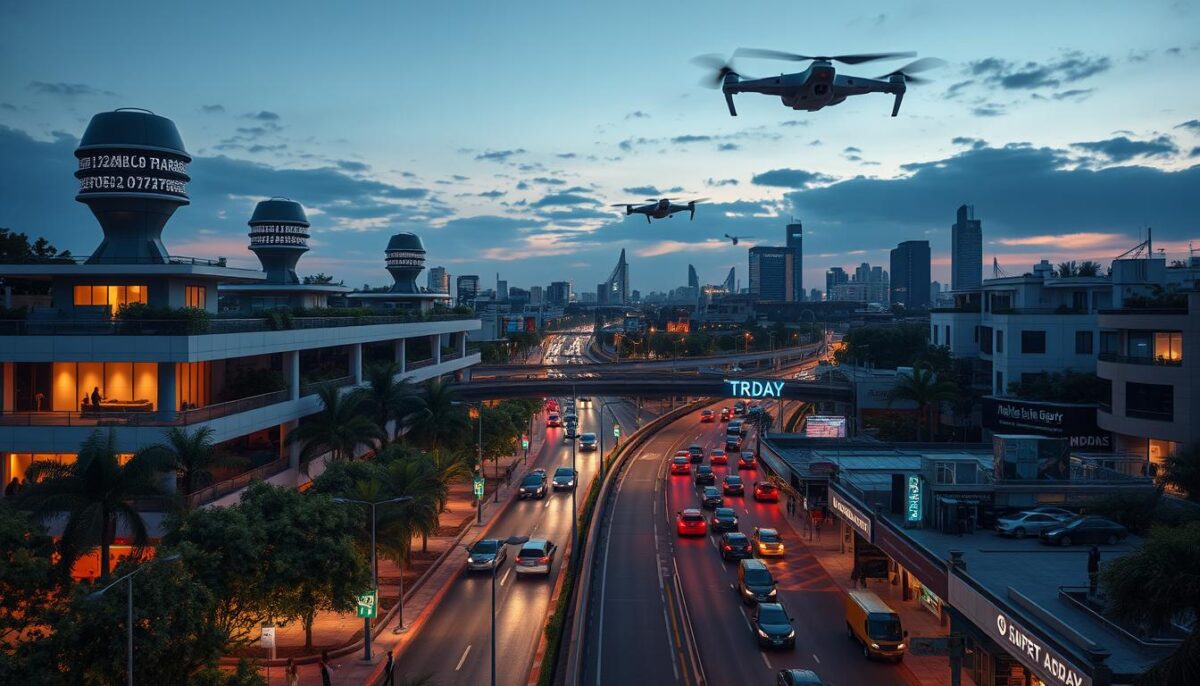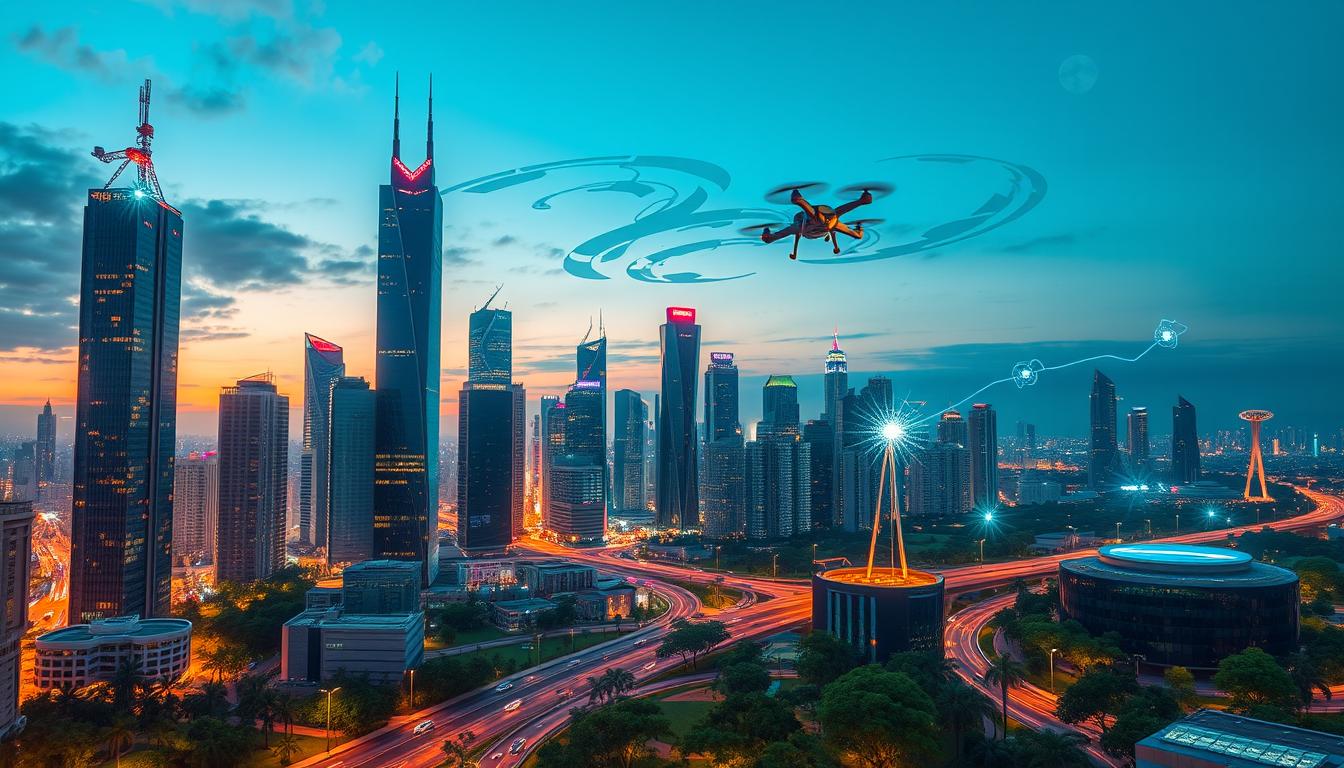Radar technology is at the forefront of urban innovation, significantly enhancing the functionality and safety of smart cities. By integrating this advanced technology into urban infrastructure, cities are better equipped to gather and analyze real-time data. This capacity not only streamlines traffic management systems but also improves overall urban safety for residents. The transformative potential of radar technology lies in its ability to work alongside other advancements such as IoT and AI, crafting a future where cities operate more efficiently and respond effectively to challenges. As outlined in various studies, including those from the IEEE Xplore Digital Library and the World Economic Forum, the applications of radar technology are paving the way for smarter, safer urban environments.
The Role of Radar Technology in Urban Safety
Radar technology significantly enhances urban safety by implementing advanced surveillance systems across various city areas. These systems monitor activities continuously and provide insights that improve public security. By utilizing radar sensors, cities can detect unusual movements in restricted zones, allowing for timely alerts regarding unauthorized access.
Enhancing Surveillance and Security Measures
One of the critical applications of radar technology in urban environments is the enhancement of surveillance measures. Surveillance systems equipped with radar can operate 24/7 and are capable of distinguishing between normal activity and potential threats. This capability offers city planners the ability to maintain high levels of safety while minimizing false alarms. Key features of these systems include:
- Continuous monitoring of restricted areas
- Integration with existing security infrastructures
- Adaptability to various environmental conditions
Real-time Threat Detection and Emergency Response
Effective real-time threat detection relies on radar technology to capture immediate data from the environment. The ability to track object movements in crowded areas significantly improves emergency response initiatives. Cities can manage large gatherings more effectively by analyzing real-time data, leading to better safety procedures. Some benefits of this technology in emergency situations are:
- Swift identification of potential dangers
- Reduction in response time during crises
- Enhanced coordination among emergency responders

| Features | Surveillance Systems | Emergency Response Systems |
|---|---|---|
| Real-time monitoring | ✔️ | ✔️ |
| Threat identification | ✔️ | ✔️ |
| Data analytics | ✔️ | ✔️ |
| Integration with security protocols | ✔️ | No |
| Support for emergency responders | No | ✔️ |
How Radar Technology is Driving the Development of Smart Cities
Radar technology is playing a pivotal role in modernizing urban infrastructures, especially in traffic management and public transportation systems. By leveraging advanced radar-based solutions, cities can enhance the efficiency of both vehicular and public transit operations.
Streamlining Traffic Management Systems
Smart traffic systems powered by radar technology provide real-time monitoring, allowing city planners to optimize traffic flow. This optimization is essential for reducing congestion and improving travel times throughout urban settings. The data collected through radar enables traffic signals to adjust dynamically, ensuring smoother transitions for vehicles. Key benefits of implementing radar in traffic management include:
- Reduction in travel times for commuters
- Decreased emissions due to minimized stops and starts
- Enhanced safety through better traffic flow
Facilitating Better Public Transportation
Radar technology is also revolutionizing public transportation by providing insights into vehicle movements and passenger loads. Operators can utilize this information for efficient scheduling and resource allocation, ensuring that public transport remains reliable and responsive to demand. Significant advantages of integrating radar in public transportation systems include:
- Improved on-time performance of transit schedules
- Enhanced passenger experience through accurate information
- Optimal resource distribution leading to cost savings
Innovations and Future Trends in Radar Technology for Smart Cities
As cities evolve into smarter ecosystems, radar innovations stand at the forefront of urban development, propelling us into the future of smart city technology. The surge in miniaturized radar systems allows for more accessible integration in various applications, from traffic management to environmental monitoring. These compact devices promise enhanced accuracy and cost-effectiveness, paving the way for widespread adoption across urban landscapes.
Moreover, the integration of advanced signal processing technologies signifies a crucial shift in how data is utilized. As cities harness AI-driven analytics, they can dynamically optimize services based on real-time radar data, which lays the groundwork for predictive urban planning. This synergy of radar technology and machine learning algorithms heralds an era where cities not only react to changing urban patterns but anticipate them, ensuring resources are allocated efficiently.
Countries such as Japan and the USA are at the helm of these developments, showcasing innovative radar applications that transform urban areas. The International Society for Radar and Electronic Systems publishes continuous research that highlights current trends, while IEEE’s analysis provides insights into the robust radar technologies reshaping smart city solutions. Reports from the McKinsey Global Institute further illuminate the implications of these future trends on urban living, emphasizing the profound impact radar innovations will have on our cities in the years to come.




